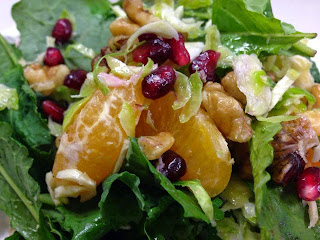 Every year I tell myself I'm not going to make all my holiday gifts. "This year, I'm going to make it easy on myself." And then I have a good laugh and set about making my plan for holiday gifting. I find that so long as I have a good stable of techniques, pragmatic strategies, and delicious recipes, I survive just fine and end up being so grateful I took it on again.
Every year I tell myself I'm not going to make all my holiday gifts. "This year, I'm going to make it easy on myself." And then I have a good laugh and set about making my plan for holiday gifting. I find that so long as I have a good stable of techniques, pragmatic strategies, and delicious recipes, I survive just fine and end up being so grateful I took it on again.
Packaging
- Packaging beautiful food is easy when you have clear glass jars. I like to cut rounds of my favorite wrapping paper to the size of the lids and simply place it between the lid and ring. You don't need glue, tape, or anything else. The ring secures it just fine. Then, if I'm feeling fancy, I might wrap hemp or other twine around the jar and add a sturdy cardboard gift tag. Be sure to let your giftees know they will need to keep the olives in the refrigerator.
- I also like to buy the Avery chalkboard labels. I buy the big oval ones and cut 1 1/2" circles out (2 per) with a hole punch. The size is perfect for the front of a jelly jar. Then, I write the contents on the label with a neon chalk marker.
- If you're in search of the clear cellophane bags you see at the stores this time of year, check Amazon. I like the 9"x12" and 4"x6" bags. Dry goods, such as biscotti, nuts, and cookies look great in bags. All I add is hemp twine and maybe a sprig of greenery, if I feel like going out to cut it. If you have holly, a couple of leaves and a berry cluster is about as good as it gets for winter.
- In general, less is more when packaging food. Let the food shine.
Gameplan
- I find it's important to make a plan in advance. If your life is anything like mine, free time is rare and precious, and if you want to gift things that need prepared a few days or less before giving, you need to time it out. This is not to say you need to spend a lot of time or energy making a schedule, but be realistic. If you don't have time in the couple of days before the gifting target, pick things that can be made a week or more in advance.
- Picking recipes that can be made in large batches is handy when preparing multiples. Not every recipe can be successfully doubled or tripled.
- Don't be above child labor, especially for teacher gifts...my kids LOVE to help, and they are so proud to give their teachers things they helped make. That being said, be realistic. If the kiddos are helping, let go of the perfectionist tendencies. Their smiles are worth it, and it encourages their generosity, while applauding their work ethic.

Recipes
- This year has been the year of TOO MANY IDEAS. I've been experimenting and taste-testing, and thus far, I've still got too many ideas swirling about. It's a good problem to have, and it keeps the ones I love well fed and happy. That being said, I have already started, and as such I have picked out a few stellar selections for our primary gifting. I make sets of 6 or 12, usually, and plan with the idea of combining two items for a complementary gift package. (See cellophane bags above.)
- Here are a few of the greatest hits:
- Fig, Chile, and Orange Marinated Olives
- Chocolate Dipped Figs with Sea Salt
- A rift on the Food and Wine Maple Pecans: Substitute chipotle chile powder OR dried thyme for the cayenne pepper. Better yet, make a batch of each, but be sure to package separately.
- Spicy Pickled Carrots. These are a favorite all around, and they are shelf-stable if you can them properly.
- Ginger-Pickled Grapes. These are simple...place a coin of peeled fresh ginger, an inch stem of fresh rosemary, and a few black peppercorns at the bottom of an 8 ounce jelly jar. Top with halved purple grapes. Measure in two tablespoons of granulated sugar, shaking the jar to distribute if necessary. Heat to boiling 1 c. white wine vinegar, 1 c. water, and 1 tablespoon of pickling salt. Ladle into jar until full, wiping the rim, and capping tightly. Store in the refrigerator.
- A rift on the Food and Wine Fig and Hazelnut biscotti: I substituted whole, blanched almonds. I love how whole almonds slice in biscotti, but be sure to use blanched almonds. The skins don't work in biscotti.













